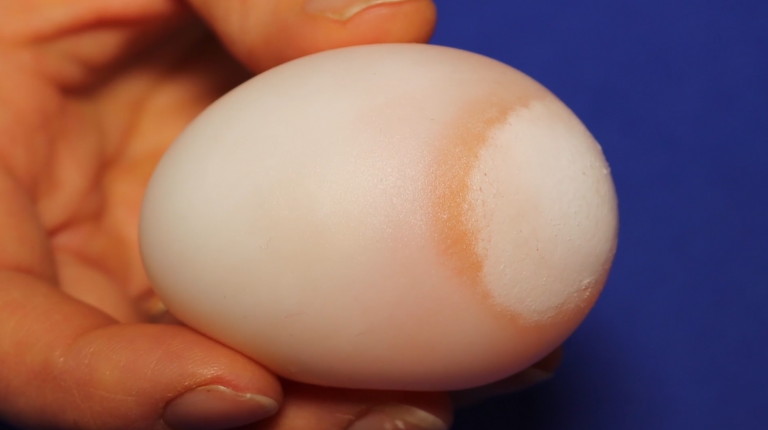Experiment with Eggs
 Photo: GUB e.V.
Photo: GUB e.V. - Resource Type
- Project
- Subjects
- Biology Chemistry Physics
- Topics
- Scientific Inquiry
- Time for activity
- 5 Days
Eggs are an exciting thing! We’ll show you how to “x-ray” an egg or make a bouncy egg. We’ll also explore how to tell raw from cooked and fresh from old eggs. Eggs from different birds not only look different, but are also different sizes. And you can find out who else lays eggs in this video.
- Introduction
-
Egg shell is made of lime. Vinegar is an acid and dissolves the lime. The reaction produces carbon dioxide, which bubbles up in small gas bubbles. Under the solid lime shell there is still a thin skin. You know this egg skin as a thin membrane from your breakfast egg. It encloses the liquid inside of the egg and prevents the “rubber egg” from leaking.
The egg-scanning method, also called shearing, is used in chicken farming to determine whether an egg is fertilized or not. If you want to test if an egg is still fresh, it is best to do the water test. Place the egg in a glass filled with water. If the egg is fresh, it will stay on the bottom.
If the egg is about a week old, the blunt end will lift up. When an egg is about two weeks old, it stands in the water. After four weeks of age, the egg floats without contact with the bottom. You should no longer eat it.
The rotation test for identifying raw and cooked eggs works because in a raw egg, the liquid inside resists. It only reacts to the turning motion with a delay. The egg lurches, while the egg with the hard interior spins like a stone.
The reason for the slowly rising egg in the freshness test is the air chamber in the egg, which becomes larger over time: Water evaporates through the shell of the egg over time and air enters. The egg thus acquires an inner floating ring, so to speak, and rises to the top after about four weeks.
All bird species lay different eggs. An ornithologist (bird researcher) can thus tell from an egg to which bird it belongs. However, not only birds lay eggs: most fish, reptiles, amphibians, insects, and mollusks also lay eggs. There are even mammal species that lay eggs: the echidna and the platypus.

/rating_on.png)
/rating_off.png) (8 )
(8 )


